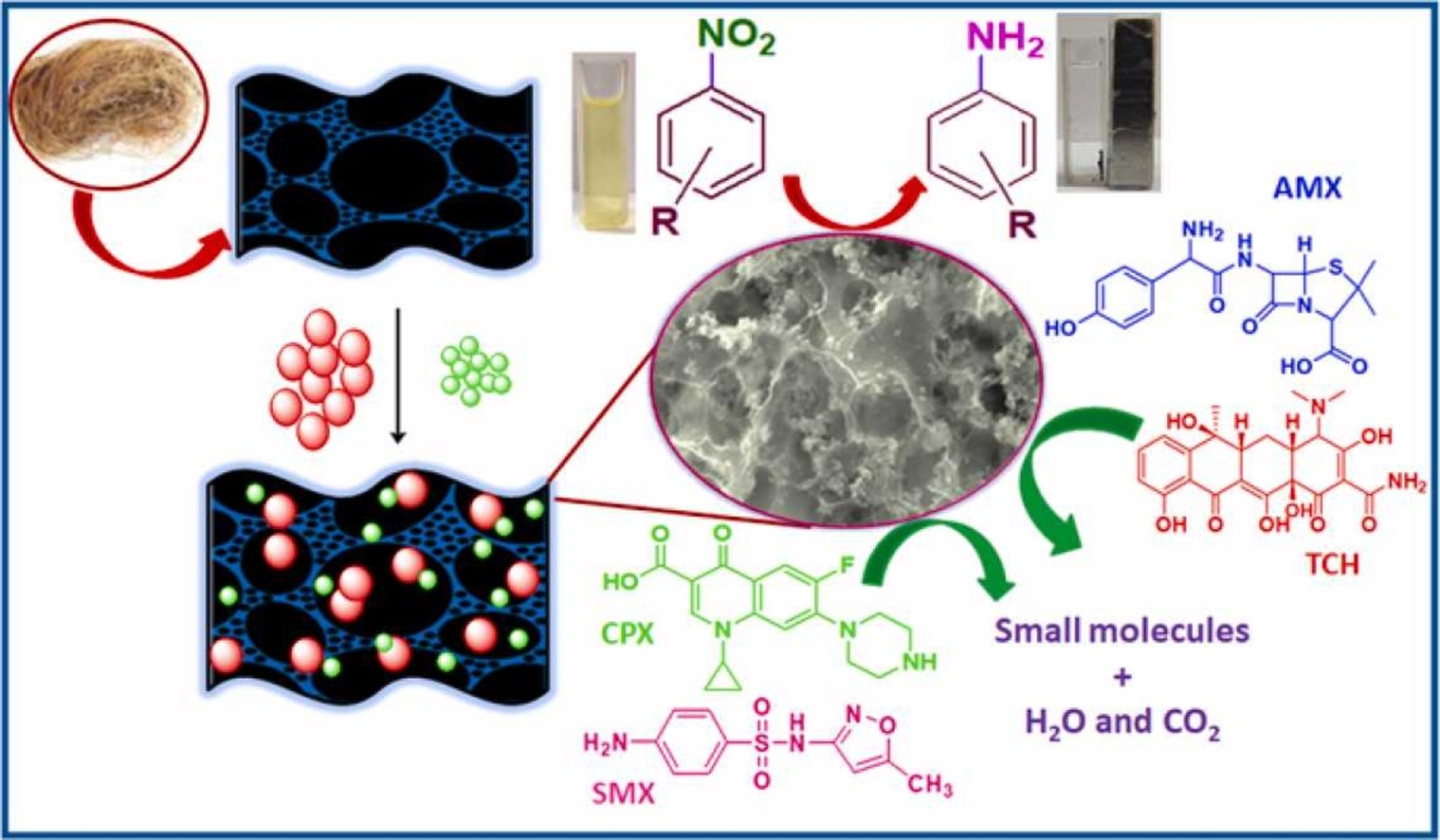Water pollution and its “downstream” toxicity on us and our environment are becoming increasingly problematic. It is estimated that around 80% of the wastewater produced in the world goes untreated, putting the lives of people at risk and restricting their access to clean water. In large part, this is because current water purification methods can often be high cost, because they involve the use of catalysts manufactured from expensive raw materials. Now, a team of researchers from Birla Institute of Technology and Science (BITS) Pilani and CSIR–North East Institute of Science and Technology (NEIST), Assam, India, have developed a cost-effective biomass-based catalyst that promises to make water purification more affordable. Their findings are published in Applied Catalysis B: Environmental.
To synthesize this catalyst, the team, which was led by Prof. Narendra Nath Ghosh of the Department of Chemistry at BITS Pilani—and included Debika Gogoi and Rajeshvari Samatbhai Karmur from BITS Pilani, as well as Dr. Manash R. Das from Materials Sciences and Technology Division of CSIR–NEIST—embedded specific nanoparticles in a widely available and cheap base material: coconut fiber. “We have synthesized a catalyst in which copper and cobalt ferrite nanoparticles are anchored on the hierarchical porous carbon derived from coconut fibers,” explains Prof. Ghosh. The high surface area of porous carbon makes it an excellent choice as a substrate for use in catalysts.
To find out how effective the catalyst really is, the researchers tested its efficiency in removing two types of pollutants from water — aromatic nitrocompounds and antibiotics, both of which are major environmental contaminants.
Aromatic nitrocompounds are present in the effluent from refineries and factories producing herbicides, pesticides, wood preservatives, paints, dyes, and pigments. Classified as very strong toxic pollutants by the U.S. Environmental Protection Agency, these compounds can severely harm aquatic and human life when released into water bodies without adequate treatment.
Antibiotics get into wastewater primarily through runoff from agricultural fields, aquaculture ponds, and pharmaceutical industries. In the former two cases, their use is unregulated leading to significant amounts making their way into our wastewater. Many antibiotics tend to “bioaccumulate,” i.e., accrue inside aquatic organisms. When consumed, these aquatic lifeforms, like fish, introduce a potentially dangerous quantity of antibiotics into our bodies through the process of “biomagnification.” This can further lead to the production of antibiotic-resistant “superbugs,” microbes that are immune to antibiotics as they have evolved to resist them through prolonged exposure. Today, antimicrobial resistance (AMR) is emerging as a global threat to humanity, and it is estimated that in 2019, around 1.27 million deaths globally were caused by drug-resistant infections.
Fortunately, the researchers from BITS Pilani and CSIR–NEIST found that the powerful novel catalyst they had synthesized could prove to be a valuable addition to scientists’ toolkit for removing aromatic nitrocompounds and antibiotics from our water. The catalyst reacts with nitroaromatic compounds in wastewater and turns them into harmless or less-harmful compounds in the presence of sodium borohydride (NaBH4). “Our catalyst reduced various aromatic nitrocompounds into amine products within 0.5–3 min in the presence of NaBH4, in an aqueous medium, at room temperature”, Prof. Ghosh notes. “Its performance is also very high towards microwave-assisted degradation of four commonly used antibiotics—amoxicillin, ciprofloxacin, tetracycline hydrochloride, and sulfamethoxazole,” he continues.
Prof. Ghosh and team additionally highlight the reusability and sustainability of their catalyst as benefits over the catalysts currently used in wastewater treatment. “What’s remarkable is that we were able to obtain porous carbon from a cheap and readily available source like coconut fibres. And this catalyst has turned out so strong that even after five cycles of use, its efficiency remained at 92%, and it remained structurally stable,” says Prof. Ghosh. This means that the catalyst can be a long-term solution in water purification in a wide variety of industries across the globe, without the risk of harming the environment in the process. Besides, because it works at room temperature, industrial water treatment plants that use the newly developed catalyst will not have to be housed in sophisticated temperature-controlled environments, which will further reduce operating costs and make the entire process of water treatment cheaper.
The United Nations has designated “ensuring availability and sustainable management of water and sanitation for all” as one of its Sustainable Development Goals (SDGs). Through their latest innovation, Prof. Ghosh and his team offer a new way for humanity to combat the threat of large-scale water pollution and provide a helping hand for the world in meeting SDG 6.
Reference: Gogoi, D., Karmur, R. S., Das, M. R., & Ghosh, N. N. (2022). Cu and CoFe2O4 nanoparticles decorated hierarchical porous carbon: An excellent catalyst for reduction of nitroaromatics and microwave-assisted antibiotic degradation. Applied Catalysis B: Environmental, 312, 121407. DOI: https://doi.org/10.1016/j.apcatb.2022.121407


 An Institute of Eminence
An Institute of Eminence








